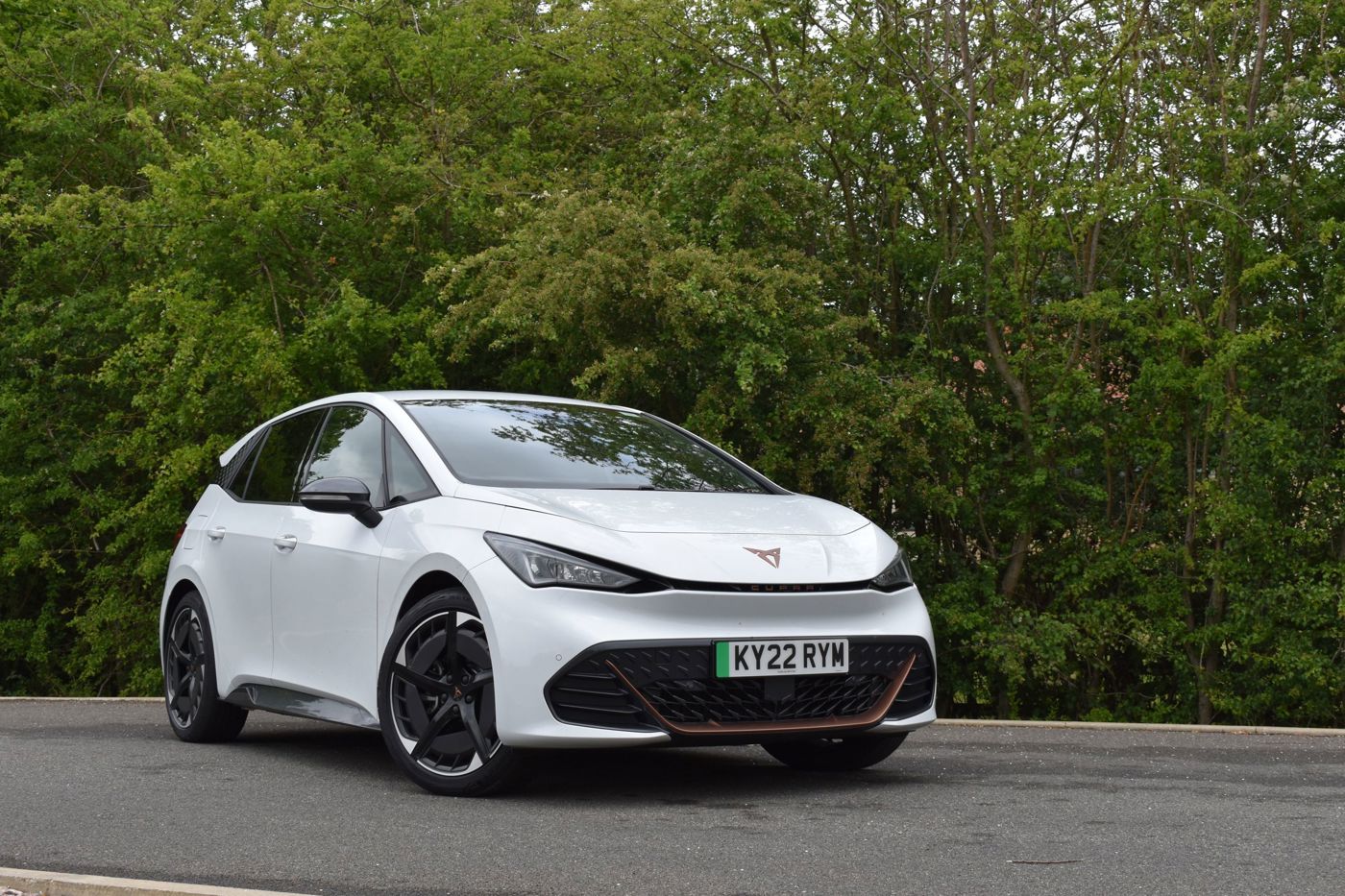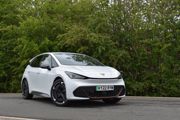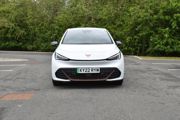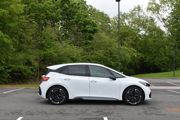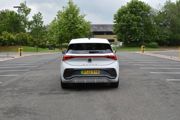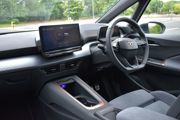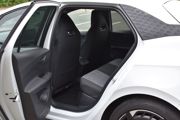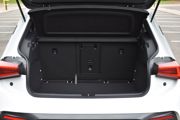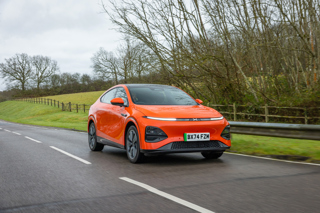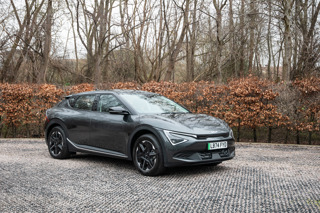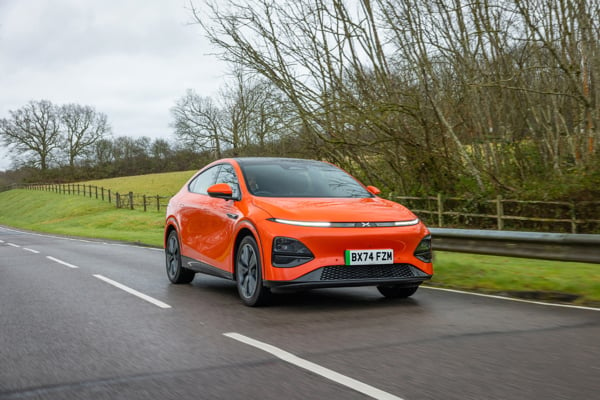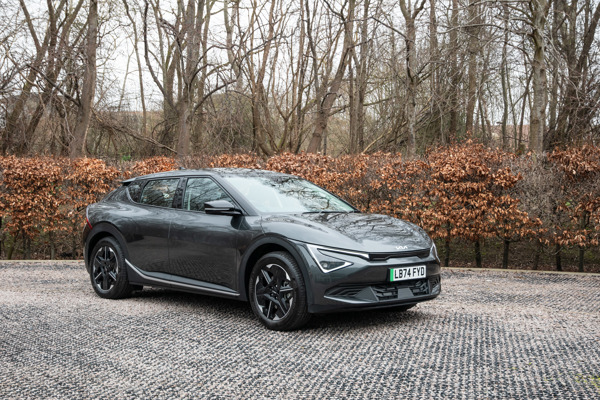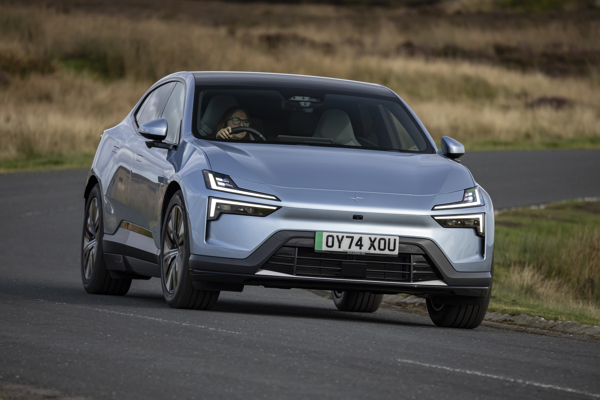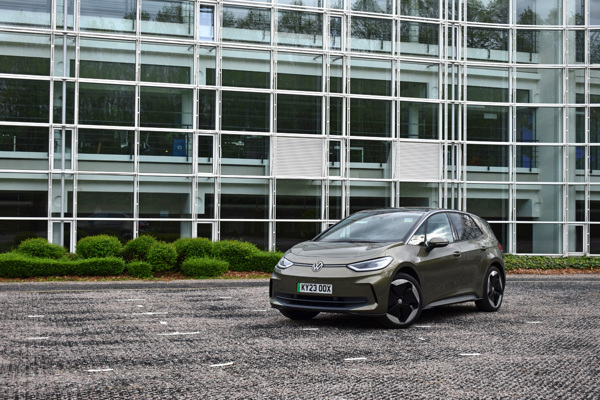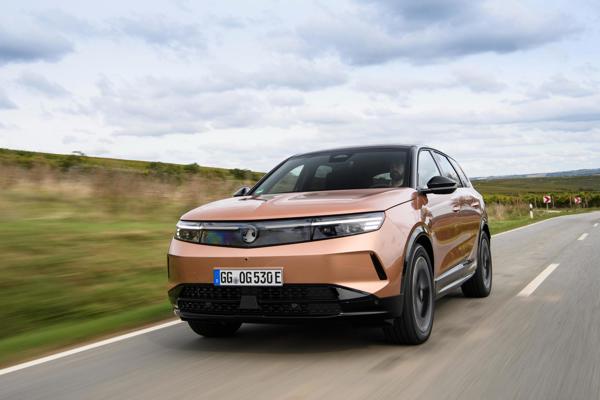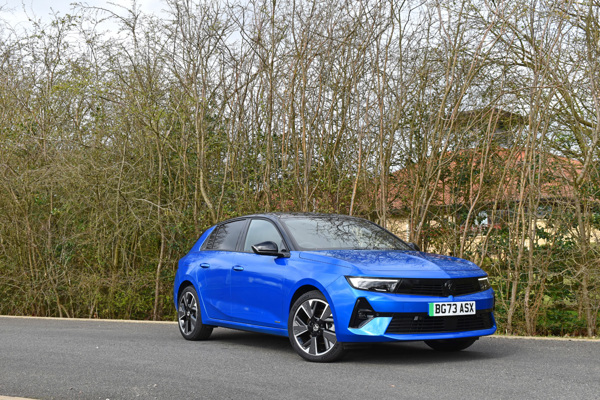Review
Nine months after the Cupra Born joined the Fleet News test fleet, it’s time to say goodbye to the brand’s first all-electric car.
Despite sharing plenty of mechanical and electrical components with the VW ID3, Cupra has succeeded in giving Born its own identity.
The car has bags of kerbside appeal, with nice design touches such as a longer rear spoiler and a more prominent diffuser than its VW counterpart.
Inside, like ID3, the Born has few physical buttons, favouring touchscreens and touch-sensitive icons. It has perhaps been the one downside of the Born, with the 12-inch touchscreen infotainment system suffering the occasional glitch and needing a reboot, while the 5.3-inch digital cockpit, which is mounted on the steering column, fails to inspire.
However, the augmented reality head-up display – in V2 and V3 trims only – which projects driving information onto the windscreen, including directional prompts from the sat-nav, is welcome.
The touch-sensitive buttons on the steering wheel are another gripe, as it isn’t unusual to inadvertently increase the volume while listening to Taylor Swift.
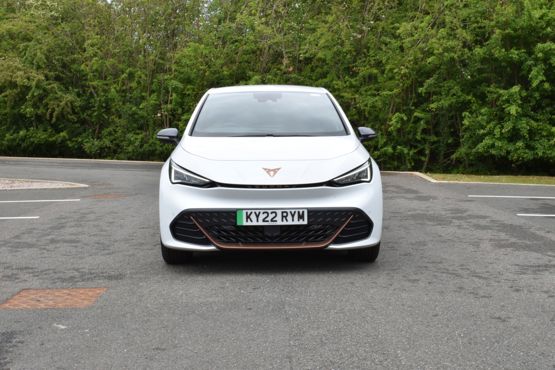
The Born has plenty of traction when launching and grip in corners, despite its substantial weight, which you become more aware of, the faster you go.
Cupra has lowered and stiffened the suspension, which helps the handling, while not detracting too much from the ride.
There are two battery versions: a 58kWh and the larger 77kWh. According to official figures, our 58kWh long-term test car has a range of 263 miles, while the 77kWh battery claims 340 miles of range from a single charge. It has been closer to 215 miles in the 58kWh version, while switching the heater on will see the range fall to 170-180 miles.
It is economical, however, returning around 3.6 miles per kilowatt-hour (m/kWh) efficiency. The four-mile commute to work, travelling in a mainly urban environment returns around 4.6m/kWh.
The 77kWh version we drove delivered a range of somewhere between 260-280 miles, but would be my choice with the P11D price only around £3,500 more than our 58kWh test car.
Does the bigger battery make more sense?
The Cupra Born is available with two battery options: 58kWh and 77kWh.
With a 58kWh version on long-term test, Cupra provided us with the larger 77kWh model to provide a comparison.
In terms of driveability, the cars feel pretty much the same, despite the heavier battery pushing this small hatchback even closer to two tonnes.
The additional range, available from the bigger battery, however, is appealing. According to official figures, our 58kWh long-term test car has a range of 263 miles, while the 77kWh battery claims 340 miles of range from a single charge.
However, real world testing of the 58kWh battery suggests it is closer to 215 miles, while our recent experience of the 77kWh version suggests a range of somewhere between 260-280 miles.
An e-Boost button, on the right of the steering wheel, is optionally available on the 58kWh and standard on 77kWh versions. It can be used to provide 30PS of additional power.
Our 58kWh test car, without e-Boost, can achieve 0-62mph in 7.3 seconds – 0.3 seconds slower than the larger battery e-Boost model. The 58kWh with e-Boost model is the quickest, reaching 0-62mph in 6.6 seconds. All cars have a top speed of 99mph.
The 77kWh 230PS e-Boost model, meanwhile, takes 7 hours 30 minutes to charge from 0-100% using the standard 11kW AC wall charger. However, using the 135kW DC alternative, the battery will charge from five-80% in just 36 minutes.
Having just made a 300-mile round trip to Wales in the 77kWh version, using a 50kW rapid charger at services on the M6, I was able to add about 180 miles of range in around 75 minutes.
In terms of cost, the P11D price of the 58kWh derivative without e-Boost is £40,095, with e-Boost it is £40,900, while the 77kWh e-Boost version has a P11D figure of £43,680.
For drivers that regularly travel longer distances, the 77kWh battery definitely makes sense for a modest increase in price. However, for most drivers the 200-ish miles of range from the 58kWh car is probably enough and the larger battery has one other complication, there's only two seats in the rear rather than three.
Tech can frustrate
There is a decent level of technology in the Cupra Born, but its functionality is proving a little frustrating at times.
The entry-level V1 model comes with a 12-inch infotainment touchscreen with sat-nav and a 5.3-inch digital cockpit display. Our V2 version also comes with a heads-up display.
The sat-nav system does the job and, when combined with the head-up display, projects directional information on to the windscreen which is a nice touch.
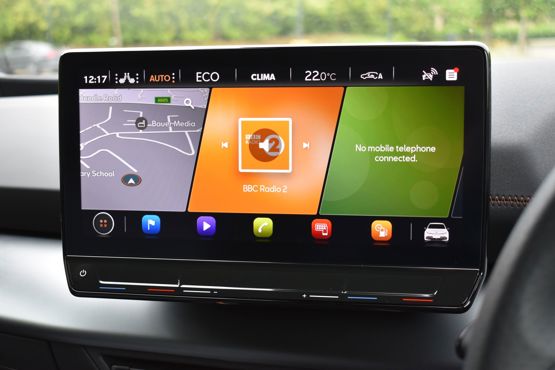
The Born also comes with Apple CarPlay and Android Auto connectivity, while a standard three-year ‘Remote Access’ subscription allows you to control certain functions using the Seat Connect app.
These include tasks such as pre-warming the cabin, remotely locking/unlocking the car and scheduling a service.
However, the app can take a while to connect to the vehicle and we have had a couple of glitches with the infotainment system, which has required a reboot.
Furthermore, operating a function via the infotainment screen, particularly when on the move, can prove difficult, as it is easy to catch the the touch-sensitive panel at the base of the display.
Overall, while adequate in terms of the technology on offer, the user-experience could be improved.
Deceptively roomy
The Cupra Born’s low, sporty stance suggests at first glance that it may not be the most practical of cars, but climb inside and it’s deceptively roomy.
There is ample space up front and, thanks to a flat floor, the tallest of rear passengers also have plenty of headroom.
The rear seats of the smaller battery version can accommodate three passengers, though sit in the centre one and you will a little pinched.
However, in order to accommodate the bigger battery of the 77kWh version, the middle rear seat disappears to become an area to put small items in.
Company car drivers will need to decide whether range is more important than passenger numbers, but, if opting for the bigger battery option, you will still be able to accommodate a family of four easily.
Regardless of which model you go for, the Born boot is a reasonable 385 litres, five more than you would get on a VW Golf. However, it can’t compete with the Renault Megane E-Tech Electric’s 440-litre load space.
Nevertheless, it is deep with a usefully squared off shape and a useful storage area below the floor for the charging cable, along with a ‘ski hatch’ to make it easy to load long items.
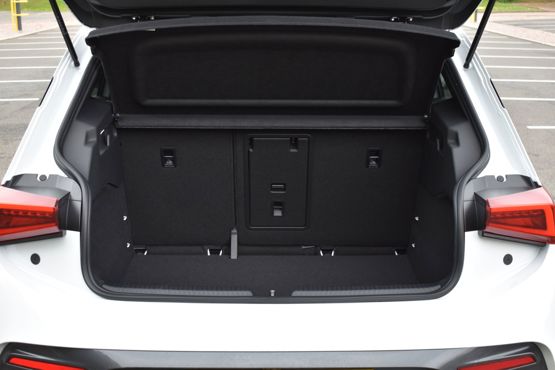
Winter hits real world range
In real world conditions, during the summer months, dependent on the journey profile, the Born has comfortably offered more than 200 miles of zero-emission driving.
If travelling predominantly around town, you can safely expect to see a range, when fully charged, of around 220 miles.
However, take the electric Born on the motorway and the range available may quickly deplete, with the increased power demand giving you around 170-180 miles from fully charged.
A recent round trip to Heathrow, which equated to around 180 miles, required a 45-minute charge at a 50kWh charger at Toddington Services on the M1 to ensure we returned home with some charge in the bank.
The need to switch on the car’s heating in recent days, however, has brought that available range down by 10-15%.
Cupra does offer a heat pump for the Born as an optional extra costing £925 to mitigate the loss of range when using the heater during the colder months.
However, it is possible to pre-heat the car via an app and, if done while charging at home, would have no impact on the range we’ve enjoyed during the summer months.
If fitted with a 77kWh battery, the Born supports 135kW rapid DC charging, making it possible to add 62 miles of range in seven minutes. A charge from 0-80% takes around 35 minutes.
The 58kWh version gets 120kW charging but charging times are similar thanks to its smaller capacity.
A full charge from an 11kW wallbox takes just over six hours for the smaller battery and seven-and-a-half hours for the larger one; expect charging to take longer if you only have a 7kW wallbox at home.
Top marks for safety
The Cupra Born is one of the safest cars on the market after achieving the highest safety ratings possible after being tested by Euro NCAP.
The all-electric car received five stars thanks to scoring highly in all four categories: adult occupant (93%), child occupant (89%), vulnerable road users (73%) and safety assist (80%)
It boasts a wide range of safety systems, include autonomous emergency braking (AEB), traffic sign recognition, travel assist, light assist and pre-crash assist.
Its front assist system with emergency braking is capable of detecting both pedestrians and cyclists, as well as other vehicles.
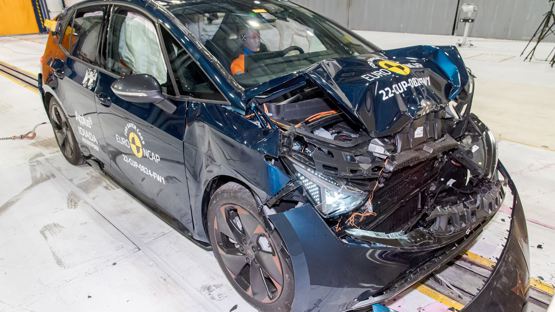
If the system detects an imminent collision with a cyclist or pedestrian, it will first provide visual and audible warnings to the driver and, if the driver still fails to brake in time or with insufficient braking effort, maximum braking is automatically applied.
It’s a clever system, which is able to detect people or cyclists crossing the road, travelling along the side of the road, and those that cross from behind an obstructed view such as a parked car. It also works at night-time.
Furthermore, the all-electric Born is fitted with exit warning technology, available as part of the optional Pilot Pack, which works by providing visual and audible alerts when exiting the vehicle.
The system detects if another road user is passing the vehicle as an occupant goes to open a door.
Cupra has also developed an acoustic vehicle alerting system (AVAS) to make vulnerable road users aware of its presence.
All electric vehicles are required to be equipped with AVAS, which emits sound when travelling at less than 12mph, however with the Born, the system is audible at speeds in excess of 25mph.
Since Euro NCAP re-evaluated its testing procedures, the manufacturer says it has worked hard to make sure its vehicles continue to score highly.
Testament to that effort is the fact that the Born joins the Formentor and Leon in receiving its five-star rating.
Real world range?
Our test car, with its 58kWh battery, holds enough energy for a claimed combined of 263 miles (WLTP), but again in reality drivers should expect a 20% shortfall with around 210 miles of driving. In colder conditions, it may struggle to break the 200-mile mark.
There is, however, no dramatic decline in predicted range, when using the air con or driving at higher speeds on the motorway.
The highest predicted range given in our test car, when fully charged, was 235 miles when we were experiencing daily temperatures of 30C-plus.
Typically, it has been hovering around 200 miles of charge, returning around 3.6 miles per kilowatt-hour (m/kWh) efficiency. The four-mile commute to work, travelling in a mainly urban environment, however, returns around 4.6m/kWh.
Every model gets rapid charging as standard, with our 58kWh battery version able to be charged at up to 125kW, meaning topping up from 5-80% using a fast enough rapid-charging point takes 35 minutes.
Meanwhile, Cupra’s range-topping 77kWh model can be recharged at up to 135kW, meaning you can charge from 5-80% in a similar amount of time.
Using a 7kW home wallbox to fully recharge the Born will take around nine hours. Go for the largest battery and it'll take over 12 hours to fully recharge at home.
When connected to a 22kW charger at work, the Born is taking just over six hours to charge.
The first electric hot hatch
The Cupra Born is living up to its electric hot hatch billing, thanks to its good looks and on the road performance. Until now, only the most expensive electric cars have offered such a focus on driver engagement.
Cupra’s first electric car is based on the MEB platform of its Volkswagen Group parent and, while it is closely related to the Volkswagen ID 3, it offers a degree of swagger in comparison.
The chassis, steering and powertrain have been fine-tuned and the car is offered with dynamic chassis control in combination with ESC Sport, the latter of which reduces the input from the traction control system to allow for more 'fun'.
It also has a lower ride height - 50mm at the front and 10mm at the rear, which gives a sporty feel to the handling. The 20-inch alloy wheels fitted to our test car ensure there is plenty of grip and add to the car's distinctive looks.
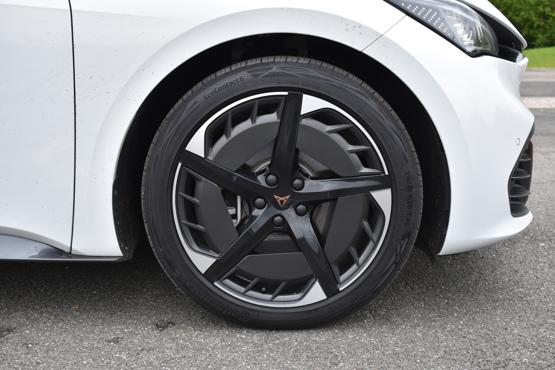
It’s perfectly happy trundling around town and is a comfortable cruiser while on the motorway. Take it on a winding country road, however, and it changes direction with plenty of accuracy, with a good amount of grip.
The only downside is that with a kerbside weight of 1.8 tonnes there is a degree of roll when cornering and when you call on the brakes you can be left wanting.
As you would expect from an electric vehicle (EV), it is nice and peaceful in the cabin, but you will get some tyre and wind noise at higher speeds.
I also found the driver’s view is compromised due to some hefty A-pillars, despite Cupra’s efforts to stick in some little portholes.
Our test car’s 58kWh battery – there is also a 45kWh version available and a 77kWh version expected towards the end of this year – has been delivering around 210 miles compared to the claimed 263 miles (WLTP).
However, that has been more than enough range for everyday driving with a top up only needed every few days, with the car currently achieving in the region of 4.6 miles/kWh.
Cupra Born V3 joins our test fleet
Cupra’s first all-electric car, the Born, currently comes with two battery options – 45kWh and 58kWh – with a 77kWh version expected towards the end of this year.
Our 58kWh version offers 204PS and an emission-free range of 263 miles (WLTP), which will get you from 0-62mph in 7.3 seconds.
On test, it has been achieving around 210 miles, but driving style and choice of driving mode – from Range, Comfort, Individual and Cupra – will impact estimated mileage.
Our 210 miles has been achieved in Cupra mode, which is the sportiest and less economical of those available.
For the 58kWh battery, charging from 0-100% takes 6 hours 15 minutes using an 11kW AC wall charger, but it can also be recharged from 5-80% using a 120kW DC rapid charger in 35 minutes.
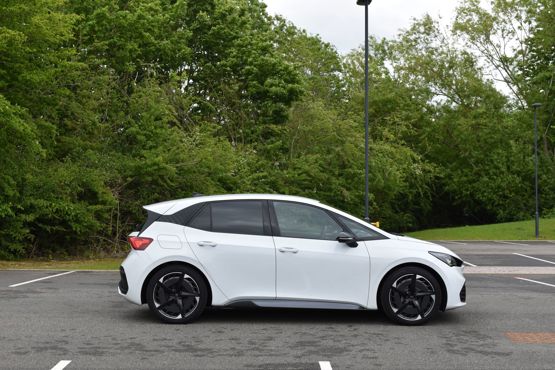
Inside, like the closely related VW ID3, the Born has very few physical buttons, favouring touchscreens and touch sensitive icons instead.
There is a 12-inch touchscreen infotainment system and a 5.3-inch digital cockpit which is mounted on the steering column.
The Born is also the first model from Cupra to come with an augmented reality head-up display – in V2 and V3 trims only – which projects driving information on to the windscreen.
There are three trim levels – V1, V2 and V3 – with the 45kWh 150PS powertrain available exclusively in V1 trim, while customers can specify all three trim levels with the 58kWh 204PS powertrain.
The Born shares plenty of mechanical and electrical components with the ID3, but Cupra has worked hard on giving its own identity.
Curpra Born V1 trim includes a generous level of specification as standard, which includes: 18-inch ‘Cyclone’ alloy wheels; electrically adjustable, folding and heated door mirrors; rain sensing wipers; full LED headlights and taillights with welcome home and adverse weather functions; adaptive cruise control; rear view camera; and lane assist.
In addition to or in place of V1 trim, V2 trim adds: 19-inch ‘Typhoon’ alloy wheels; dark tinted rear windows; heated washer nozzles; augmented reality head-up display; and heated front seats.
Finally, in addition to or in place of V2 trim, the range-topping V3 trim - which we're testing - features: 20-inch ‘Hurricane’ alloy wheels; and granite grey Dinamica bucket seats with 12-way electrically adjustable front seats, which are heated and include a massage function.
Specs
| Manufacturer | CUPRA |
| Model | Born |
| Specification | Born Hatch 5Dr 0.0Electric 58kWh 204 V3 Auto 22MY |
| Model Year | 0.00 |
| Annual VED (Road tax) | £0 |
| BIK List Price | £38,335 |
| CO2 | N/A |
| BIK Percentage | 2% |
| Insurance Group | N/A |
| CC | N/A |
| Fuel Type | Electric |
| Vehicle Type | Small family car |
| Luggage capacity (Seats up) | 5litres |
Running Costs
| P11D | £38,335 |
| Insurance group | N/A |
| Fuel Type | Electric |
| Cost per mile | 74.04ppm |
| Fuel | 4.76ppm |
| Depreciation | 67.26ppm |
| Service maintenance and repair | 2.02ppm |
Rivals
Info at a glance
-
P11D Price
£38,335
-
MPG
N/A -
CO2 Emissions
N/A -
BIK %
2% -
Running cost
3 Year 60k : N/A 4 Year 80k : N/A -
Fuel Type
Electric



